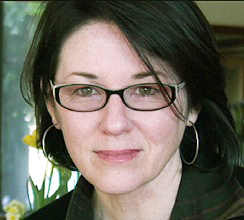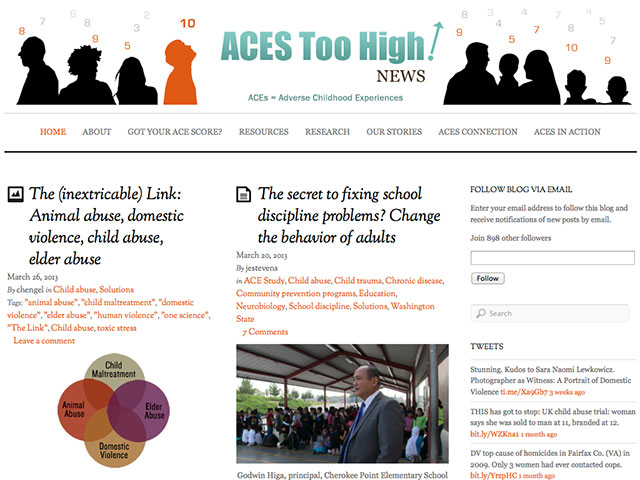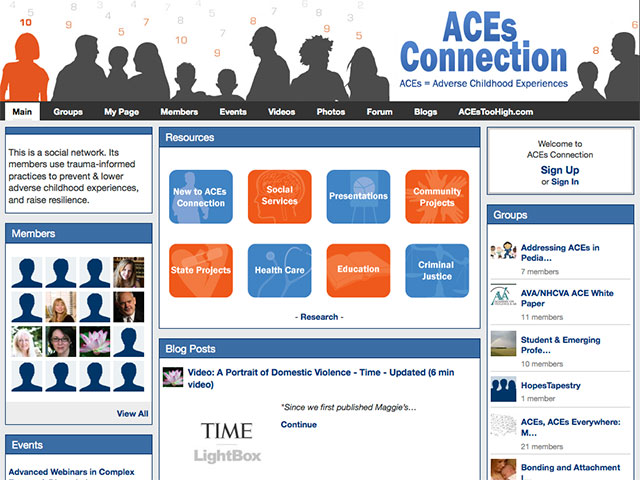Underserved health beat leads fellow to create niche news network

When traditional news organizations begin laying off beat reporters, crucial community coverage can take a hit.
Health is one beat that is underserved in almost every community. People want to understand why so much money is spent on healthcare every year and why there are so many health problems in communities, said Jane Stevens, ACESTooHigh.com editor and 2008-2009 Donald W. Reynolds Fellow. This is what is leading her to create her own niche health news network, which she’s hoping to grow into a national network.
During her fellowship, Stevens and a team of students and professors at the Missouri School of Journalism developed a prototype social journalism health news site called HealthCommons. Stevens wanted to create a low or no-cost content management system.
After the fellowship, the Lawrence Journal-World in Lawrence, Kan., asked Stevens to join the organization to oversee the company’s 15 websites and develop a health news site based on HealthCommons. The result was WellCommons.com, the first local social journalism health site.
Stevens develops niche news network

In late 2011, Stevens returned to her home in California to begin the first of a three-phase project to develop her own niche news network based on the model she created in Lawrence. In phase one, Stevens created the niche news site ACEsTooHigh.com and its accompanying social network, ACEsConnection in January 2012. These sites focus on the connection between adverse childhood experiences (ACES) and adult health problems such as cancer, heart disease and depression, as well as violence and becoming a victim of violence.
According to ACESTooHigh.com, “over the past 15 years, research has shown that childhood trauma injures a child’s brain. It impairs the brain’s physical development and function.”
Both sites are based on findings from the CDC’s ACE Study, an epidemiological study that linked child maltreatment with later-life health and well-being, as well as the neurobiology of the effects of toxic stress on the brain, developments in epigenetics and the long-term biomedical effects of toxic stress on the body’s systems.
ACESTooHigh focuses on research into all those areas, as well as how organizations, agencies, states, communities, businesses and individuals are implementing ACE- and trauma-informed practices. The news site has a broad audience. The social network, built on a Ning platform, is specifically for organizations, agencies, states, communities and individuals who are implementing trauma-informed practices in schools, courts, prisons, social service agencies, youth services, businesses and elsewhere.
Stevens said there are no other national news sites that address these issues collectively but these issues need to be addressed.
“Until local communities can have conversations about what is happening to children in families, the community is never going to be able to solve their local health issues like obesity, diabetes, heart disease, cancer, depression, suicide and substance abuse,” she said.
ACESTooHigh phases

Later this year, Stevens hopes to launch phase two of the project — a network of three to four social-journalism health sites. If phase two is successful, phase three will focus on “rolling the model out across the U.S.” Stevens wants her community health sites to not only be in communities that can financially support them, but in every community where these networks are needed.
When Stevens first started her sites, they were self-funded. However, she was able to receive some funding through The California Endowment to do a series of stories about school discipline. The stories were inspired by another article she wrote about an alternative high school in Walla, Walla, Wash., that began implementing trauma-informed practices. The story hit a nerve with readers and received about 375,000 page views.
Stevens hopes to obtain additional funding to grow the site and hire a couple of reporters to help with coverage on ACEsTooHigh, and a community manager for ACEsConnection.
“There is just so much happening in this arena, I can’t keep up with it,” said Stevens.
Creating your own social network
Stevens’ social network was created using Ning, a digital platform that lets users create their own social networks. According to Stevens, Ning has the same features Facebook has but the network setup is different. The look can be individualized and users can add their own advertising.
Participants in a network can also form their own groups. So far, several people have created groups within the ACEsConnection network, where they have separate discussions and work with each other on projects.
Stevens’ tips for creating niche news networks
- Niche is the future of news. Currently, there are a couple of dozen niche news networks, such as Netshelter.net and SBNation.com, which comprise several thousand individual niche news sites. Work for a niche network first. This will allow you to understand how these networks work, as well as how the advertising, staffing works together.
- Find a niche area that’s “close to your heart,” or underserved such as the environment, local business, recreational sports and the outdoors.
- At the very heart of creating a niche network is one goal — creating a safe and trusted source for news for the community. Professional journalists can provide the trusted source for these networks.
- New niches can combine social media and journalism. Currently, many news organizations place a barrier between themselves and social media in terms of utilizing the technology to its fullest capacity.
“Of course they’ve embraced social media in terms of Twitter and Facebook, but as far as letting people be part of the conversation and part of the information flow, news organizations haven’t done that,” said Stevens.
Well Commons combined social media and journalism. There was no trouble distinguishing between what was the reporters’ content and what was coming from the community, said Stevens.
“It wasn’t random stuff coming from the community,” said Stevens. “These were people who had a stake, who had some skin in the game, who wanted really good health information out there.”
